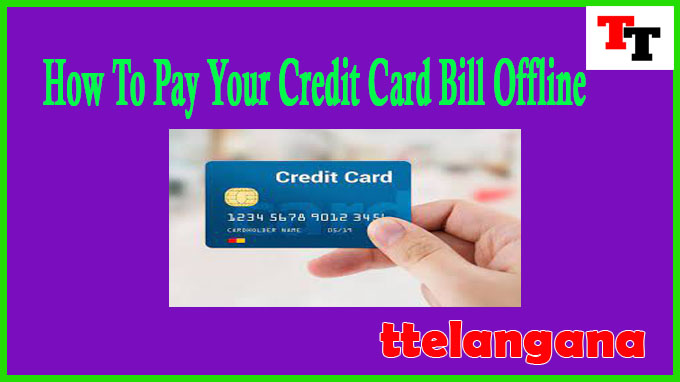How To Pay Your Credit Card Bill Offline
Paying your credit card invoice offline can be accomplished through various methods, imparting flexibility to customers who prefer not to apply on line fee structures. Offline methods commonly involve guide strategies and direct interactions with the credit card issuer or a physical payment place.
Here is a comprehensive guide on a way to pay your credit score card bill offline:
Understanding Your Credit Card Statement: Before making any fee, it’s far vital to apprehend your credit card assertion. Review the announcement to make sure the quantity due, price due date, and any extra costs or prices.
Gather Necessary Information: Collect all the necessary information to facilitate the fee manner. You’ll need your credit card wide variety, the call on the cardboard, and the billing cope with.
Check Accepted Payment Methods: Contact your credit score card company or seek advice from the billing statement to check which offline charge techniques are common. Common methods encompass coins, take a look at, cash order, and bank transfers.
Payment via Cash: To pay your credit card invoice with coins, you could go to the closest department or office of your credit card issuer. Most fundamental banks or financial establishments that trouble credit cards will have bodily locations wherein you can make cash payments. Provide your credit card info and the quantity you want to pay to the teller, and they may process the charge for you.
Payment by Check or Money Order: To pay by means of check or money order, you will want to jot down a check or attain a money order for the amount due. Make it payable to the credit card company and consist of your credit score card account quantity at the check or cash order. Mail the fee to the deal with precise in your credit card announcement. Remember to ship it well in advance of the due date to keep away from past due charges.
How To Pay Your Credit Card Bill Offline
Payment by using Bank Transfer: Some credit card issuers can help you make bills thru a bank switch. To try this, you will want to go to your bank or use on-line banking offerings to initiate a transfer out of your checking or financial savings account to the credit card provider. Provide the vital info, along with your credit score card account quantity, the billing cope with, and the price quantity.
Phone Payments: Many credit card issuers provide a phone fee provider in which you may name a chosen range and offer your credit card info to a customer support consultant. They will system the price to your behalf. Ensure you name the correct range, as fraudulent people can also attempt to scam you.
AutoPay Option: Consider putting in place an AutoPay choice in case your credit card company allows it. This way, the minimal payment or the entire assertion stability may be mechanically deducted out of your bank account on the due date, ensuring you never miss a fee.
Retain Payment Confirmation: After making an offline price, ensure to hold the payment receipt or confirmation provided by using the payment location or the bank. This will serve as proof of fee in case of any discrepancies.
Check Payment Processing Time: Keep in thoughts that some offline fee methods may also take longer to manner than online techniques. Ensure you’re making the charge well earlier of the due date to keep away from any past due payment expenses.
Remember that credit score card issuers may also have unique suggestions and procedures for offline payments, so it’s usually first-class to check with them immediately for the most accurate and up-to-date facts.
